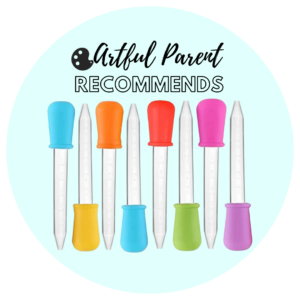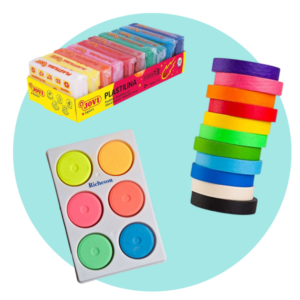Raising little ones is beautiful and brutal at the same time. In our apartment in Brazil, my days swing between sticky banana fingers, Slack notifications, and the smell of sautéed garlic.
My husband and I both work full time, we have a one-year-old who thinks every drawer is her playground, and we still want to eat home-cooked meals, keep our place tidy, and enjoy each other at the end of the day.
That’s a lot of plates spinning.
Sanity doesn’t come from perfection. It comes from a handful of habits that make the chaos softer and the days more predictable. Here are nine that keep me grounded.
1. Design a morning you repeat without thinking
Mornings are a domino line. If the first one falls well, the rest usually follow.
We wake at 7, have a simple breakfast at the kitchen island, and walk my husband to work. It sounds small, but this walk sets the tone.
We align on the day, breathe real air, point out dogs to our daughter, and feel like a team.
When we get back, I do a quick grocery stop for the meal of the day. A predictable loop like this cuts decision fatigue. I don’t spend energy choosing between twenty options before 9 a.m.
I follow the path we already mapped, which means I start work clear and steady.
If your mornings feel heavy, simplify them until they fit on a sticky note. Same wake-up time, same breakfast, same first task.
Let routine do the heavy lifting so you can save your brain for the moments that actually require you.
2. Use “micro-reset” cleaning instead of deep cleans
I used to wait for the perfect block of time to clean, which never came. Now I rely on micro-resets.
While one of us does bath and bottle, the other clears the table, loads the dishwasher, and puts away toys. Ten minutes per transition adds up fast. You aren’t aiming for spotless. You’re aiming for a home that doesn’t shout at you.
Micro-resets work because mess attracts mess. A cleared counter stops clutter from multiplying. A reset living room makes bedtime calmer. By the time our daughter sleeps, we get to sit down without being stared down by a mountain of laundry.
If you’re overwhelmed, choose three zones to reset daily. For us it’s sink, dining table, and living room rug. Everything else rotates through the week, but these three give us visual peace.
3. Put movement on the calendar like a meeting
When my schedule gets tight, the first thing that disappears is exercise. The second is patience. Those two facts are related. So I treat movement like a meeting.
I either do a 20-minute flow at home while Emilia plays with her stacking cups, or I walk an extra loop after we drop my husband off.
Sometimes I carry groceries in a backpack to make it count.
Consistency matters more than intensity. Tiny, regular movement helps me sleep better and gives me a calmer baseline. I notice the difference at 7 p.m. when we’re both tired and she’s teething.
My reactions are gentler. I feel like myself.
If you can, pair movement with something you already do. Walk after school drop-off. Stretch while dinner simmers. Put a mat next to the crib and do two sets of squats while you wait for the baby monitor to go quiet.
4. Keep a “good enough” weekly menu
Cooking daily is a value for us, but I don’t audition for a cooking show during the week.
I keep a simple rotation: one pot, one pan, one salad, one soup, one pasta, one grain bowl. The ingredients change with what’s on sale, but the formats don’t. It keeps our grocery list tight and our evenings predictable.
I choose recipes that scale and reheat well. If Lara is still with us at lunch, I portion an extra serving for the next day. Our daughter eats a deconstructed version of whatever we’re having.
If it’s grain bowls, she gets rice, avocado pieces, and shredded chicken on the side. No separate kids’ menu, no extra mental load.
A “good enough” plan reduces drama at 6 p.m. and lets us sit for family dinner without frantic last-minute decisions. The food is fresh and warm. That counts for a lot.
5. Name roles for the evening routine
We split evenings into lanes. One does dinner, the other does bath and story. We swap if someone had a hard day.
The key is that each person owns a lane, which prevents stepping on each other’s toes. While one parent puts the baby down, the other resets the kitchen.
When the door to the nursery opens, we both exhale into a clean living room.
This works in any home, even if you’re solo at bedtime. You can still name roles for yourself in order. Dinner, bath, clothes laid out for tomorrow, then dishes.
Sequencing takes out the mental tug of “what next” when you’re low on energy. It also cuts bickering. We aren’t renegotiating roles every night, we’re following a plan.
The result is more time to be a couple once she sleeps. We talk, we watch a show, or we just sit quietly. That quiet is gold.
6. Protect couple time with small rituals
We do weekly date nights. Sometimes it’s a buzzy spot in São Paulo while our nanny stays late, sometimes it’s in Santiago with the grandparents on duty.
But the habit that really protects us is smaller. After bedtime, we meet on the couch with tea or a drink and we debrief.
Three questions: What went well today, what was hard, what do we need from tomorrow.
It takes ten minutes. It keeps resentment from building and turns us back into teammates. We also keep a running note for future dates: new restaurant to try, gallery opening, stand-up show. That list makes date planning fast, so we don’t waste babysitting time debating.
If you’re in the trenches with tiny kids, your partner doesn’t need grand gestures. They need consistency and attention. Tiny rituals are the scaffolding that holds you both up.
7. Limit decisions with seasonal capsules
Decision fatigue is real, especially when you’re running on half-sleep.
I stick to a capsule wardrobe and a simple beauty routine so I can look pulled together without spending 40 minutes finding an outfit. Shoulder-length hair I can style quickly, lash extensions so I skip mascara, short red nails every two weeks, and a few pairs of elegant flats that go with everything.
I apply the same logic to the baby’s clothes. Drawer organizers, outfits grouped by type, and a pre-packed diaper bag by the door. The goal isn’t to be fancy. It’s to remove frictions that steal time and energy we need elsewhere.
When I do buy new pieces, I ask a blunt question: will I wear this 30 times in the next six months. If not, it’s a no. Fewer, better things make weekdays smoother.
8. Build a support triangle: home, help, and community
We don’t have extended family in São Paulo, so we intentionally build support.
At home, that means clear routines and a space arranged for a toddler who loves to roam. For help, we rely on Lara’s steady presence during business hours.
For community, we lean on neighbors for park play and quick chats that brighten the day. This triangle holds us.
When we fly to Santiago, we soak up grandparents and let ourselves rest a little more. Having family help is a luxury we don’t take for granted.
We plan adult time while our daughter is spoiled by cousins and abuelos. That time together keeps our marriage fun, not just functional.
If your triangle is thinner, start small. Trade an hour with another parent on the weekend. Join a WhatsApp group for your building.
Hire help for the one task you hate the most, even if it’s just twice a month. Small support counts.
9. Practice calm limits and let kids learn
My parenting style is firm and calm. I let our daughter explore and bump into safe boundaries so she can learn how the world works.
If she pulls the plant leaves, we move the plant. If she throws food, dinner is finished. I don’t narrate big speeches. I keep it short, consistent, and kind.
This approach saves my sanity because I’m not constantly negotiating. I don’t need to invent a new response for every situation. Limits are clear, and they’re delivered without heat.
It’s amazing how much harmony comes from saying little and doing the same thing every time.
I also try to build in safe freedom. Low shelves with sturdy toys. A cupboard she’s allowed to open. A stool at the sink so she can “help” rinse vegetables. When kids get to participate, power struggles shrink.
A few practical add-ons that help
Batch the brain work. I plan our week on Sundays while Emilia naps. I check our calendars, pick dinner formats, note any errands, and set reminders. This takes 30 minutes and clears the fog.
Create tiny oases. A candle on the table at dinner. A playlist for bath time. Fresh pillowcases on Friday. Small sensory cues make home feel like a sanctuary, even when there are blocks under the couch.
Hold both ambition and grace. We run at maximum productivity right now because the season calls for it and we’re okay with that. At the same time, if a day goes sideways, I don’t call it failure. I call it life with a small child and try again tomorrow.
Final thoughts
These habits don’t make parenting easy. They make it lighter. They lower the noise so you can hear the good parts: the squeal when the bath toys splash, the little hand reaching for yours on the morning walk, the quiet clink of two mugs on the couch at night.
If you try any of these, start with just one. Choose the habit that would ease your pain point the most and give it two weeks.
You don’t need a total life overhaul. You need a smoother path through the day, so your energy can go where it matters.
And if your current season is heavy, remember this: kids grow fast. This phase will shift. In the meantime, we can build homes and routines that care for us while we care for them.
Related Posts
-
A Kids' Cookbook That Makes Cooking Easy and Fun!
This is a review of The Ultimate Kids Cookbook which features easy, family-friendly recipes kids…
-
7 small parenting habits that build stronger bonds than big life lessons ever could
When I think about the moments that matter most in parenting, they rarely look like…
-
Create a Kids' Craft Room that Gets Used!
Create a kids craft room that will get used. Learn how to choose a location,…













